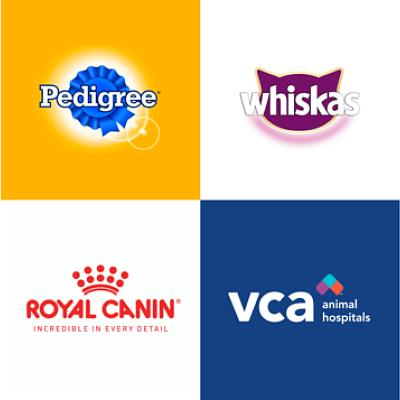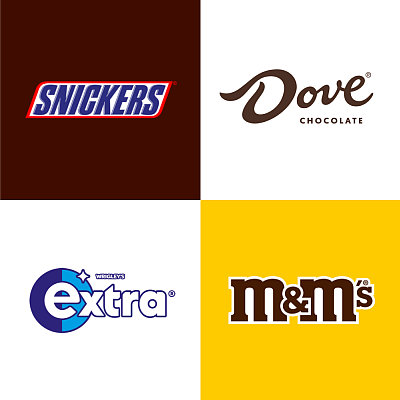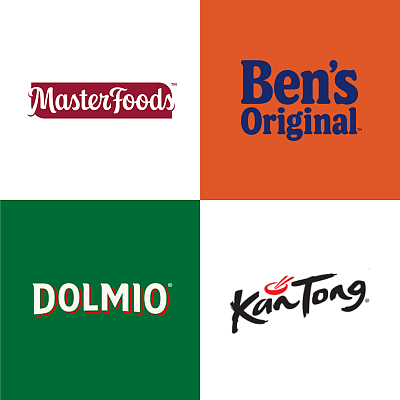Cocoa and Forests Action Plan
Current Situation
Forests serve as important reservoirs of carbon, and the clearance of primary forest cover causes serious increases in greenhouse gas emissions. Forests also provide habitat for half of all known plant and animal species, regulate local rainfall patterns and provide livelihoods for millions of people in rural communities.
More than five million farmers in West Africa, Southeast Asia and the Americas grow cocoa, often in areas where deforestation is an issue. Most are smallholders working modest plots of land planted with aging, unproductive cocoa trees. There is an urgent need to help farmers grow more cocoa on existing farmland, without encroaching on remaining forests.
Depending on annual demand, Mars sources between 350,000 to 400,000 metric tons of cocoa annually from countries including Brazil, Cameroon, Côte d’Ivoire, Colombia, Dominican Republic, Ecuador, Ghana, Indonesia, Mexico, Nigeria, Papua New Guinea, Peru, Philippines, and Vietnam. Since the launch of our Cocoa for Generations strategy in 2018, and as part of our Responsibly Sourced Cocoa Program, which sets out for suppliers our requirements for the cocoa which are suppliers are required to source under the program. We are committed to contributing to the development of a more modern, inclusive, and sustainable cocoa supply chain for future generations, and, through our Responsibly Sourced Cocoa Program and other Mars sponsored sustainability initiatives, we aim to help support opportunities for positive change for cocoa-growing communities around the world.
This document explains our approach to helping preserve forests, consistent with Mars’ Deforestation and Land Use Change Position. Preserving forests in cocoa is also a crucial element to meet Mars’ broader ambitions to hold flat our land use, reduce greenhouse gas emissions from our value chain by 27% by 2025 (vs 2015 baseline), and achieve net zero greenhouse gas emissions across our full value chain by 2050. Read more about Mars’ current progress.
Our Requirements for Suppliers
We require all cocoa sourced by our suppliers under the Responsibly Sourced Cocoa Program to be:
- Deforestation and conversion-free (as defined by the Accountability Framework Initiative (AFi) ) after 31 December 2013 or the date specified in a credible landscape-level framework, such as the Cocoa & Forests Initiative (CFI) which defines 31 December 2017 as the cutoff date;
- Produced on farms whose perimeters have been polygon-mapped using GPS coordinates; and
- Sourced in compliance with applicable laws and in a manner respectful of the human rights of farming families, Indigenous People and forest-dependent communities.
Following best practices around minimal deforestation and conversion allowance and honoring the principle of inclusion in the cocoa supply chain, minimal levels can be addressed by the supplier through its monitored implementation of a corrective action plan.
Our Approach: Mars’ Responsibly Sourced Cocoa Program
Prior to supplying cocoa to Mars under our Responsibly Sourced Cocoa Program, our suppliers also align to the expectations articulated in Mars’ Supplier Code of Conduct, which describes Mars’ social, environmental and ethical expectations for suppliers.
In 2019, we introduced a Responsibly Sourced Cocoa Program and Responsibly Sourced Cocoa Specification which sets forth that we expect our suppliers to demonstrate they understand the risks in their supply chain, have a plan to address them, and demonstrate their action and impact.
What Does the Responsibly Sourced Cocoa Program Mean?
When we refer to “Responsibly Sourced Cocoa”, we mean cocoa that has been produced, delivered and sold in compliance with the Mars Responsibly Sourced Cocoa Specification. This specification requires, among other things, that suppliers of cocoa have:
- Third-Party Verification: Independent third-party auditors review the cocoa supply chains of the suppliers and their farming organizations participating in the Responsibly Sourced Cocoa Program to determine whether they meet the certification standards of Rainforest Alliance, Fairtrade or another certification body approved by Mars or comply with the Responsibly Sourced Cocoa Specification.
- CLMRS: For high-risk origins in West Africa, suppliers must implement child labor monitoring and remediation systems (CLMRS) for any at-risk households of farmers who are participating in the Responsibly Sourced Cocoa Program.
- Polygon Mapping: Suppliers must polygon map the entire perimeter of the farms participating in the Responsibly Sourced Cocoa Program using GPS coordinates and be able to trace the cocoa produced on those farms to the first point of purchase of the cocoa by the suppliers.
Many suppliers in the cocoa industry use a common method called “mass balance” in purchasing, processing, shipping and storing cocoa. Under the mass balance method, cocoa produced, delivered and sold in compliance with the Responsibly Sourced Cocoa Specification may be mixed at one or more steps in the cocoa supply chain with cocoa that has not been produced, delivered or sold in compliance with the Responsibly Sourced Cocoa Specification. Because Mars sources cocoa on a mass balance basis in purchasing, processing, shipping and storing cocoa used in the ingredients of Mars products, Mars cannot guarantee that the cocoa in any specific product was purchased through its Responsibly Sourced Cocoa Program or was produced, delivered and sold in compliance with the Mars Responsibly Sourced Cocoa Specification.
Multi-Stakeholder Collaborations to Scale and Sustain Impact
The challenges the cocoa industry faces are complex and must be tackled collectively. We will continue to work with government, industry and civil society stakeholders on collaborative efforts to preserve forests and natural ecosystems. Together with our partners, we aim to:
- Support governments to implement and enforce forest protection policies, as our own ambitions rely on these being put into effect
- Work within credible, landscape-level frameworks where these exist and take additional steps to support enhanced agroforestry, reforestation or forest restoration and community engagement
An illustration of Mars’ collaborative efforts is our membership in the World Cocoa Foundation's Cocoa & Forests Initiative (CFI) and being a signatory to the CFI commitments to halt deforestation and restore forest in the global cocoa supply chain, with an initial focus on Côte d’Ivoire and Ghana, where more than 65% of cocoa is grown and which are major origins for cocoa sourced by Mars.
In 2018, we embarked on a collective journey to make a positive impact on the environment and communities in Côte d'Ivoire and Ghana, launching country-level action plans aligned with the three pillars of the Cocoa & Forests Initiative, prioritizing forest protection and restoration, sustainable production and the livelihoods of farmers livelihoods, and community engagement and social inclusion.
Working tirelessly alongside our suppliers and technical expert organizations, we have made substantial progress towards achieving our objectives. We are proud to announce the successful completion of our CFI1.0 targets, a testament to our dedication and collaborative efforts.
However, our journey does not end there. We remain resolute in our commitment to the cocoa farmers and landscapes of Côte d'Ivoire and Ghana, as well as our collaboration with their governments and over 30 cocoa and chocolate companies. To solidify our dedication, we have developed new action plans in partnership with our suppliers, outlining our activities and investments in the three pillars of the Cocoa & Forests Initiative until 2025. (Our annual CFI reports are published on the Mars Sustainability Reporting Hub.)
Supply Chain Transparency
We are seeking to build an efficient and highly transparent supply chain that supports our goal of preventing deforestation and conversion of natural ecosystems. We support the development of national traceability frameworks to enable this process where relevant.
For increased transparency, we also publish a list of the tier 1 suppliers we source cocoa from, as well as a list of tier 2 farmer organizations that work with the suppliers Mars sources cocoa from.
You can download our Tier 1 and Tier 2 supplier lists on our Sustainability Reporting Hub under Cocoa.
In 2020, we began publicly sharing an interactive map showing the names, locations and total number of farmers in each farmer group from which we sourced cocoa as part of our Responsibly Sourced Cocoa Program. The latest version of that map is below.
Interactive Map of Farmer Groups that are part of Mars’ Responsibly Sourced Cocoa Program
1Where validated, methodologies such as the High Conservation Value-High Carbon Stock Approach may be used to apply AFi’s definitions.
At Mars, we recognize that the global cocoa supply chain faces many complex and interconnected risks and challenges, especially in regions of West Africa. Although Mars does not own or operate any cocoa farms in West Africa, it does purchase cocoa sourced from all over the world, including West Africa. Mars is making investments in various programs with the goal of helping to combat the risks of human rights abuses, climate change and threats to forests, among other things. Ultimately, no one actor can combat these risks alone—lasting progress will depend on collective action from governments, corporations, NGOs, and all stakeholders in the cocoa industry.



